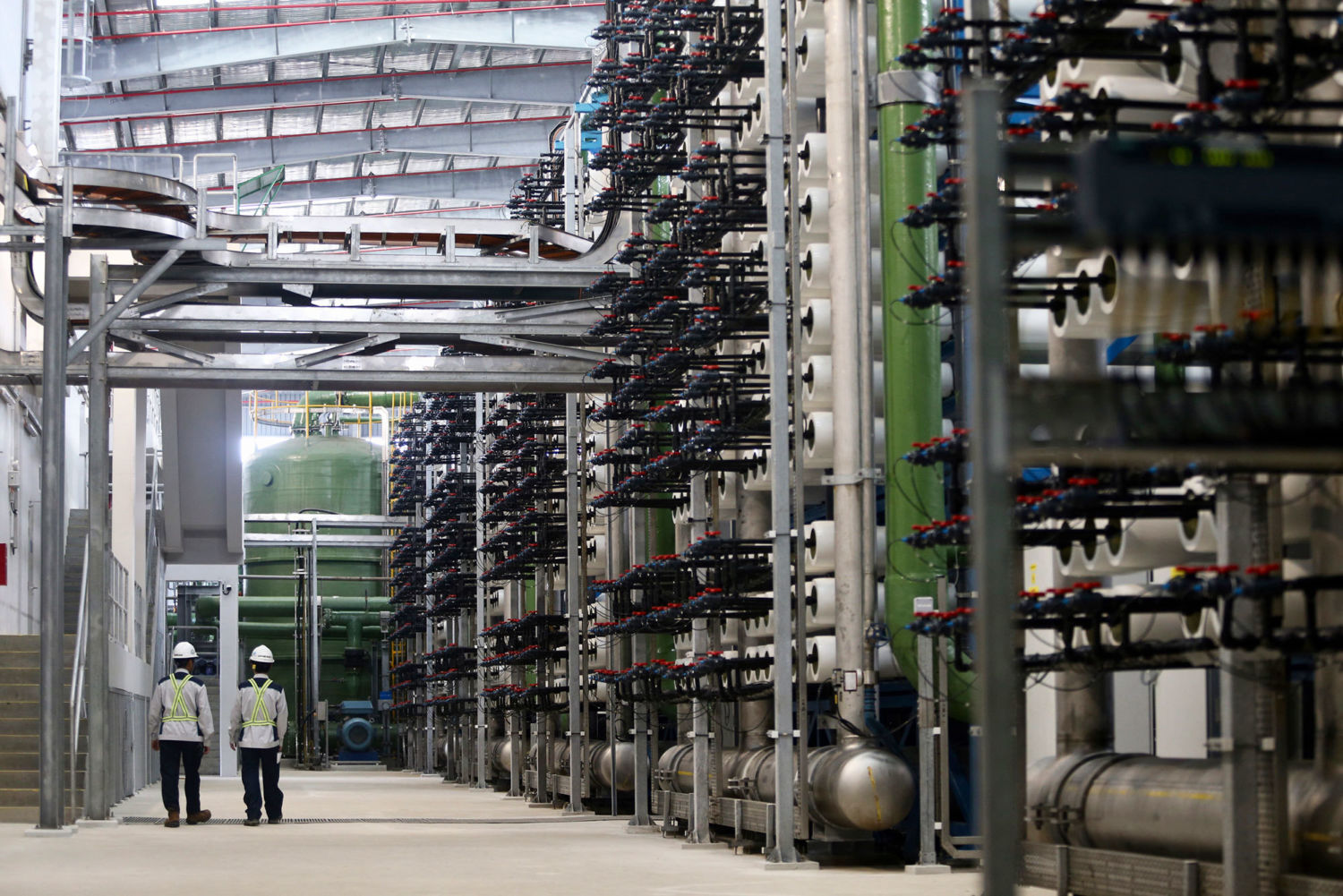Water is a resource necessary for all human life, yet it is also the subject of one of the world’s most concerning scarcities as sources of drinking water are depleted and demand grows high. Groundwater is pumped faster than it is replenished, and rivers and freshwater bodies are being drained and dried out. Given that only 3% of Earth’s water is fresh, one of the diverse solutions to the water crisis may lie in harnessing the remaining 97%: undrinkable saltwater.
Desalination is the process of separating salt from salt or brackish water to get drinkable liquid. It requires gathering and purifying water on a massive scale–promising, but weighed down by increasing costs and other concerns.
Most desalination processes work by using either reverse osmosis or distillation. Reverse osmosis (RO) is the most widely used, which involves forcing water through filtering membranes. Fluids naturally behave according to osmosis–moving to balance out the salt concentration on both sides of a membrane. However, since the objective is to fully separate the two, the water must be pushed in entirely opposite directions using high-power pumps.
Distillation involves boiling feedwater and condensing the vapor into pure water. Multistage Flash distillation is the most common take on this procedure, in which the feedwater is processed in containers, suddenly reducing their pressure. The lower pressure allows the water to “flash,” or boil at a lower temperature, which is repeated multiple times to be thorough. This does not require the chemical softeners and cleansers used in RO.

In the final stages of the desalination process, leftover salt and minerals separated out of the water have to be disposed of. It forms a brine solution that typically accounts for half the volume of the original feedwater, which is placed back into the ocean. This can cause ecological harm by depleting water and oxygen and messing with conditions needed by sea life.
Ensuring responsible diffusion of waste over large areas is key to preventing problems. In addition, water intakes often suck in small aquatic organisms, potentially weakening ecosystems. While some designs reduce this, it seems to be an inevitable problem.
All of this heating or filtering is clearly energy-intensive, requiring greater money and resources than conventional sources. Forcing water through membranes requires around 800-1000 pounds per square inch of pressure, using large amounts of energy from nearby utilities.
The lowest-costing sources of desalinated water are still close to double that of freshwater. San Diego, for instance, pays about $1,200 for each acre-foot of freshwater, but nearly $2,200 for each acre-foot of desalinated water. Fossil fuels end up being the major source of this power, causing ironic climate concerns. Still, with its potential to solve our freshwater problems, much research is being dedicated to improving desalination’s sustainability.
Taking entirely undrinkable saltwater and purifying it is an exhaustive process, but it is nevertheless one of the first options to use as freshwater sources grow scarce. Australia, for example, faced severe drought in the 2000s, with freshwater systems dropping severely.
Many large cities successfully invested in desalination, such as Melbourne, which ended up sourcing a third of its water from the process. San Diego, reliant on the dangerously low Colorado River, gets 50 million gallons of water a day (10% of the municipality’s needs) from a desalination plant. Dry climates with little groundwater to begin with, like Saudi Arabia and Israel, also rely on desalination.
To improve the energy issue for the many present and future users of desalination, scientists have focused on making the procedure more efficient and connecting it to renewable energy. Singapore, for instance, has researched capacitive deionization–drawing salt and particles out of water via electromagnetism–as a novel approach.
Advances in existing technologies, like thinner graphene membranes and more efficient heat exchangers in distillation, also increase efficiency, making plants more compatible with lower-output solar energy sources. Nuclear power systems have also been tested and used, involving reactors that power desalination while providing a city’s energy at the same time.
Already in use in some countries, desalination promises an exciting new approach to the freshwater scarcity crisis. It, however, still faces hurdles to becoming a more widespread application. Nonetheless, scientific progress paints a brighter future for the undertaking. Who knows? Some day in the future, you too might just quench your thirst with a nice, cold glass of desalinated water.

